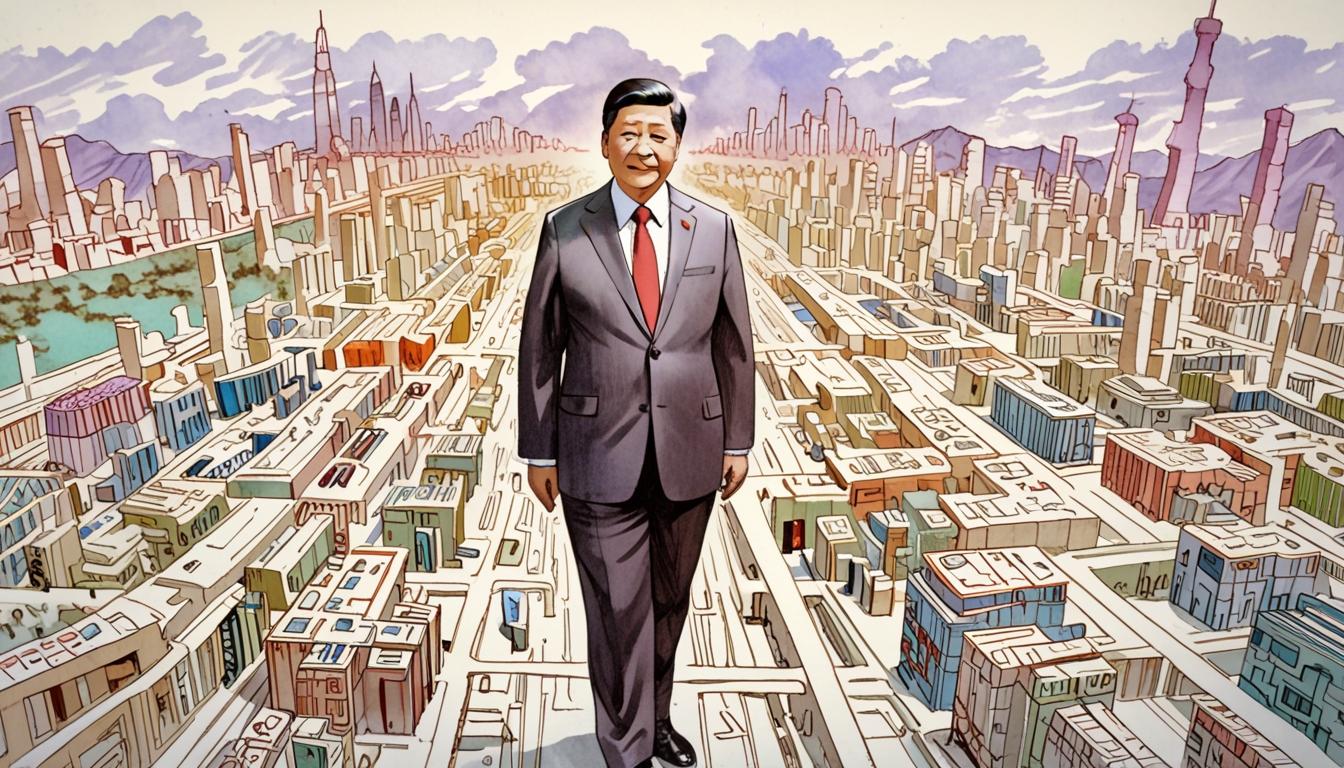In the face of escalating trade tensions sparked by the imposition of up to 145% tariffs on Chinese goods by the Trump administration, China under President Xi Jinping is not exhibiting signs of economic fear. Instead, the response in trading circles and among Chinese nationalists has been marked more by defiance and a surge of online mockery targeting US figures, including former President Donald Trump, Vice-President JD Vance, and tech entrepreneur Elon Musk. This reaction aligns with President Xi's recent assertion that for over 70 years, China has relied on self-reliance and hard work rather than external aid, and remains undaunted by what it deems "unreasonable suppression."
Economically, the tariffs against China correspond to existing internal challenges that the country is grappling with, rather than solely causing new pain. Over the last decade, China's dependency on US exports has diminished, providing some cushion. Still, deeper issues such as a collapsing housing market have severely impacted consumer confidence and spending within the country. Many Chinese families have seen the value of their property investments plummet, a crisis exacerbated by a glut of unoccupied housing units—commonly referred to as "ghost cities"—spread across the provinces. Statistics released two years ago by He Keng, former deputy head of China's statistics bureau, estimated that empty apartments could house a population of up to three billion if filled, underscoring the scale of overbuilding and market misalignment.
The property market decline is compounded by concerns around social welfare, particularly pensions. Approximately 300 million people in the 50-60 age bracket are expected to retire over the next decade, raising questions about pension fund solvency, with projections suggesting potential depletion by 2035. Youth unemployment remains a pressing issue, with official data from August 2023 indicating that more than 20% of urban youth aged 16 to 24 were unemployed. Efforts to stimulate consumer spending have included governmental measures such as childcare subsidies, wage increases, improved paid leave, and a $41 billion programme introducing discounts on consumer electronics and electric vehicles, but experts warn these are short-term fixes.
Professor Nie Huihua of Renmin University noted, "Given the downward pressure on the economy, it is unlikely domestic spending can be significantly expanded in the short term." Similarly, Professor Zhao Minghao from Fudan University stated, "China does not have high expectations for talks with the Trump administration… The real battleground is in the adjustment of China's domestic policies, such as boosting domestic demand." Fudan University's Dean of Economics, Professor Zhang Jun, emphasises the importance of developing long-term mechanisms, saying, "We need to start increasing residents' disposable income."
The political implications for China's leadership are significant. President Xi's vision for a rejuvenated China since his ascent in 2012 faces serious tests amid economic uncertainty and rising discontent among the younger population. A report from Freedom House's China Dissent Monitor documents an increase in protests motivated by financial grievances, although state censorship and crackdowns have so far contained their spread. Xi himself acknowledged in 2012 that "Only when the country does well and the nation does well can every person do well," a line now shadowed by the current economic difficulties.
Despite these challenges, China has made substantial progress in advanced manufacturing sectors including consumer electronics, batteries, electric vehicles, and artificial intelligence. Companies like BYD have overtaken global rivals such as Tesla in EV production, and AI initiatives like the chatbot DeepSeek spotlight technological advancements. However, US restrictions on key technologies including semiconductors from Nvidia present a barrier to China's ambitions for technological supremacy—a goal complicated further by President Trump's tariffs.
Strategically, China has been pivoting to diversify its export markets away from the US by expanding trade ties within South East Asia, Latin America, Africa, and through its Belt and Road Initiative, bolstering relations with the Global South. The Lowy Institute reports that over 145 countries now conduct more trade with China than with the US, a sharp rise from just 30 countries in 2001. According to Professor Zhang, "Trump's coercive tariff policy is an opportunity for Chinese diplomacy."
Xi's first international visit after the tariff announcement focused on South East Asia, underscoring the region's importance amid trade tensions. Around 25% of Chinese exports are now routed through or produced in countries like Vietnam and Cambodia, which serve as part of China's diversification strategy. However, this shift is not without risks; dumping cheap Chinese goods into secondary markets could provoke new trade disputes, as has happened previously.
China's standing as a proponent of global free trade faces challenges due to its own imposition of trade restrictions in recent years. Notably, in response to political tensions with Australia in 2020, China imposed tariffs and import bans on multiple Australian products, significantly reducing trade. Australia’s Defence Minister Richard Marles recently stated that Australia would not align with China amid escalating tensions with the US, reflecting the complexities in global diplomatic alliances.
Amid this multifaceted economic struggle and geopolitical realignment, President Xi appears confident that China can weather economic pressures longer than the US. Evidence of this resilience emerged after President Trump hinted at a reduction in tariffs, which was greeted on Chinese social media with statements such as "Trump has chickened out." Moving forward, China's approach seems focused on addressing internal economic weaknesses and continuing to establish itself as a significant global trade partner independent of US influence. The overall outcome remains contingent on China's domestic policy adjustments and broader diplomatic strategies in the evolving international landscape.
Source: Noah Wire Services
